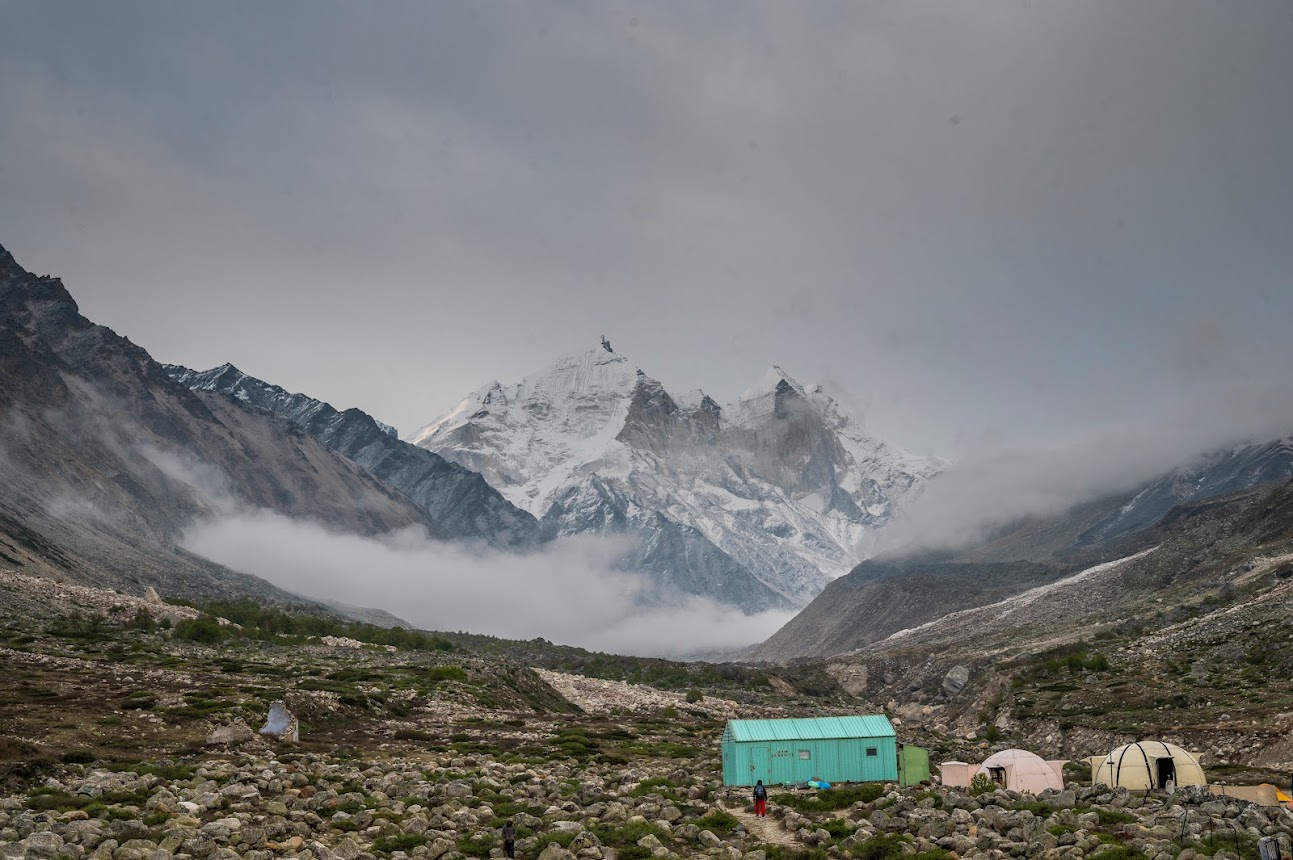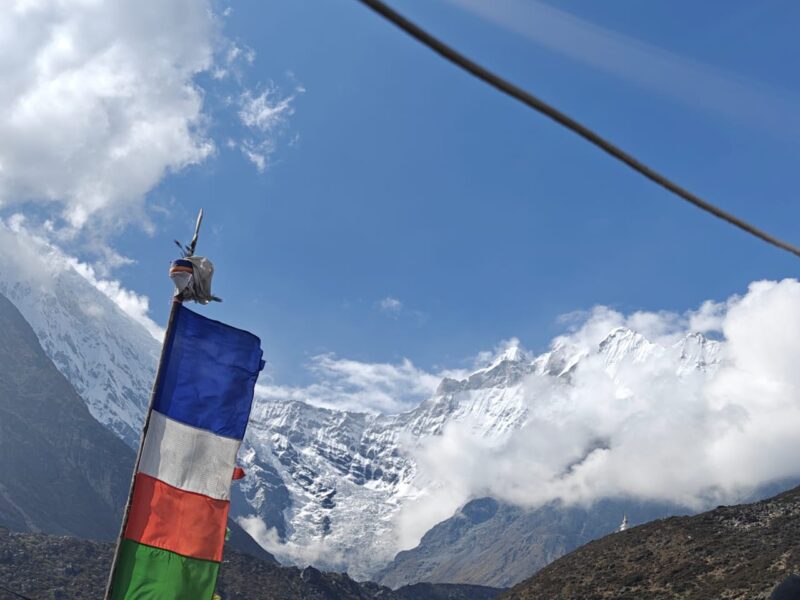Day 4: Trek Day 2: Monday, May 23, 2022
Chirbasa to Bhojbasa
3,788 m / 12,431 ft; 5 km; 3 hrs
We set on the next day’s trek to Bhojbasa, some 7 km away. The climb now was relatively steep and the pathway narrow. The vegetation gradually decreased, with only boulders and stones of varying shapes visible everywhere. The river Bhagirathi, however, always keeping us company.
On our way, we passed many sadhus who were also going towards Bhojbassa, some even to Tapovan. They had no warm clothes or shoes and only carried small bags, conveying that life’s journey could go on sans paraphernalia. Comfort and luxuries of life are only impediments to our spiritual growth.
The guide was always by my side while Saurabh was having a whale of a time clicking photos. It was getting warmer. After nearly two hours of walking, we were approaching Bhojbasa, our campsite for the night, and I could see many tents in a small area. The vegetation was now non-existent, only mountains all around us. There was a well-kept government guest house, while a small construction was going on nearby. The porters and the cook were waiting for us there. They had put up our tents and we had lunch. We felt relaxed to see some human activity in this place. The river was just a hundred yards away, its water ice cold.
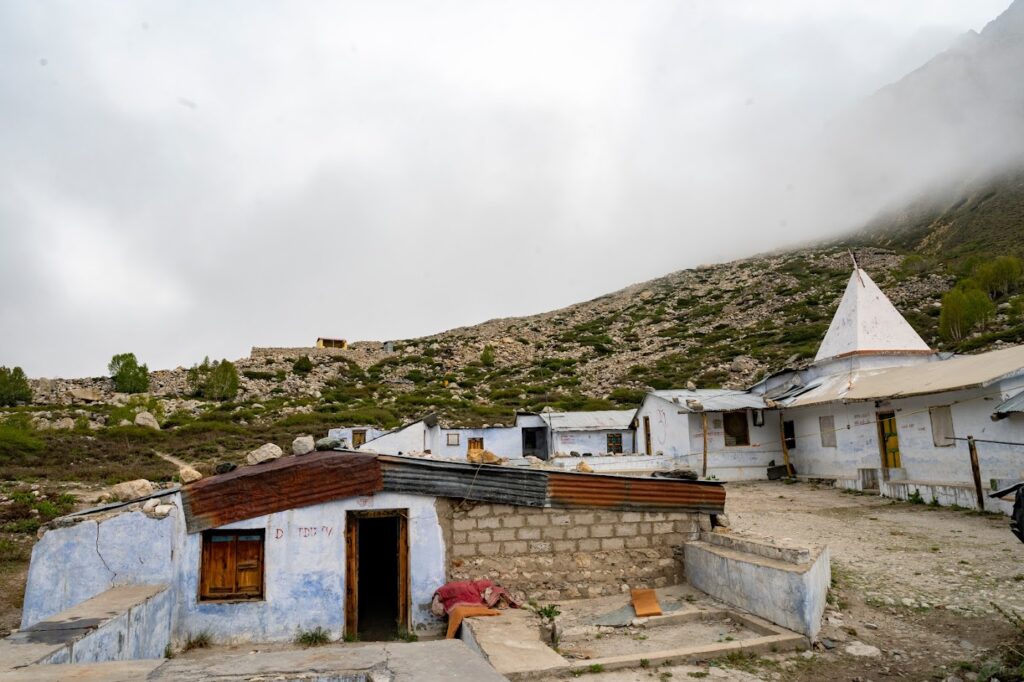
We spent the day talking to the sadhus and fellow trekkers, asking about the weather and other things. Someone told us that the climb to Tapovan, which was ahead of our destination Gaumukh, was very steep. The evening passed in this manner.
Our next plan was to go to Gaumukh and from there onward to Tapovan. The climb to Tapovan was steep, the weather was also inclement and staying in a tent at night was not advisable. So, we decided to go only up to Gaumukh and return to Bhoibasa the same day, not taking an unwarranted risk for myself just because of our success on the first two days.
Day 5: Trek Day 3: Tuesday, May 24, 2022
Bhoibasa – Gaumukh – Bhoibasa
4,023 m / 13,200 ft; 6.5 kms; 5 hours
We embarked on the final leg of our trek to Gaumukh, a distance of around 6 km but full of boulders and stones. This time, we had to cross the Bhagirathi River by a ropeway with a carriage which could carry a maximum of four people at a time. At least four people were required to pull the rope on the other side. There were no permanent workers, so the trekkers had to collaborate to do the pulling. There was a small queue to get to the other side of the river.
The walk was strenuous, but I was eager to reach Gaumukh or the Gangotri Glacier at the earliest. The weather was clear. On the way toward the glacier, we could see the vast plain of stones.
Someone informed us that the glacier had been receding in its volume over the years. I was surprised to see the markings that indicated how much the glacier had decreased over the years.
The glacier melt maintains a perennial flow of water to the river. But for how long would the flow continue? There seems to be no way to mitigate this loss. It is a matter of scientific study but should concern all of us.
In the words of Bhagirath, “One day, God shall recall the river Ganga back to the heavens!” It connotes that Bhagirath possibly realised thousands of years ago that this glacial river, having descended from the skies (heaven), shall one day retreat to the skies. Even assuming the glacier retreats at its present rate of 15 to 18 meters per year, it would be almost 150 years for the glacier, so to say, to go back to the skies. Are we prepared for this eventuality?
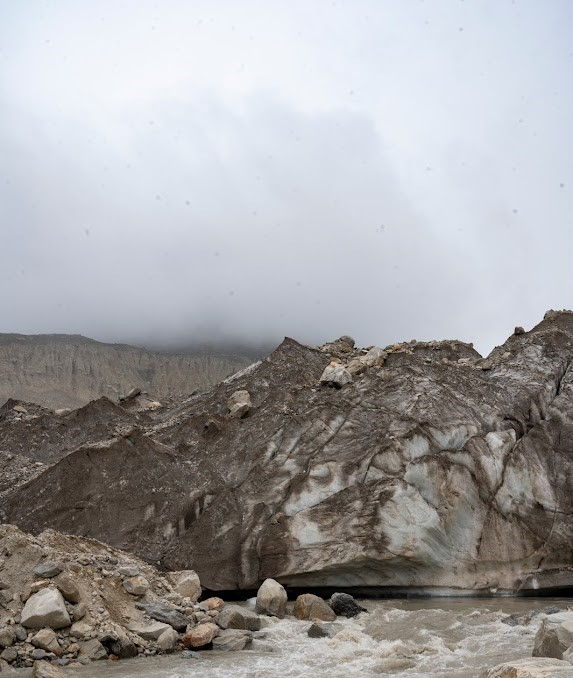
Why is it called Gaumukh?
Legend has it that while searching for his lost sheep, a shepherd boy reached a glacier in Gangotri, which looked like a cow’s mouth, thus giving it the name Gaumukh. It is one of the Ganges’ primary sources and one of the largest in the Himalayas. With an estimated volume of over 27 cubic kilometres, the glacier is about 30 km long and 24 km wide.
It has an altitude of 4,023 meters and is surrounded by many mountains, like Chaukhamba, Kedarnath, Shivling, Meru, and Bhagirathi I, Il and III.
We stayed at Gaumukh for about thirty minutes, bowing down to the mighty Ganges, expressing our gratitude to the river for serving the vast humanity of our country with no expectations in return.
We decided to return as the weather was turning cloudy.
I reconfirmed that the way to Tapovan from here was a steep climb, ruling out any inclination to venture towards that place.
On our way back, we kept talking to sadhus and trekkers, sharing our experiences, even as we enjoyed intermittent snowfall. We slept well that night with the satisfaction that we could finally make it to Gaumukh, our long-cherished dream.
Day 6: Trek Day 4: May 25, 2022
Bhojbasa – Gangotri – Dehradun
In the morning, we began our trek back to Gangotri, feeling elated for having achieved what once seemed impossible.
The weather was cloudy when we prepared to descend and have our breakfast. We wore light clothing to have a comfortable trek to lower altitudes. We left Bhoibasa, passing by the mountains, even as the River Bhagirathi kept us company. After about three hours, we reached Chirbasa. Saurabh told me it takes less time on the return trek, as people are already acclimatized to the climate. There is less amount of panting while one’s speed increases, and we were eager to return to civilization.
At Chirbasa, we saw that the small thicket of the jungle where we had stayed was occupied by other trekkers who had put their tents there. We learnt that more visitors were reaching there as the weather had opened up in the Chaar Dham region.
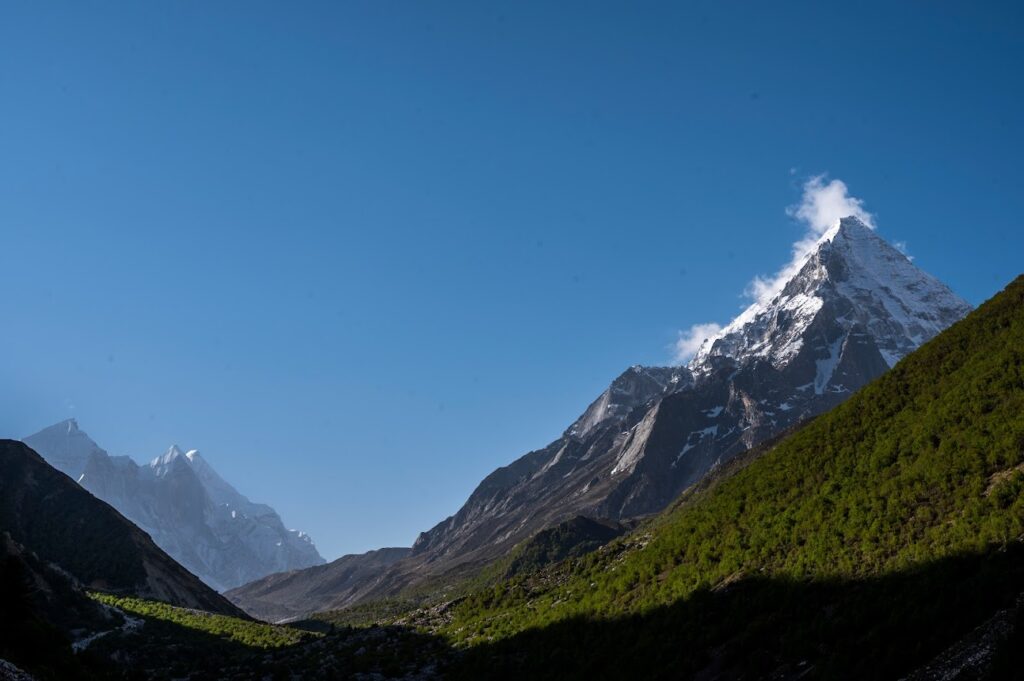
But here, it had started raining.
We thought of spending some more time here as this was the last leg of our trek, but the eagerness to reach Gangotri made us leave the place. On our way, we met some Russian tourists, apparently Isckon followers, who were chanting Hare Krishna Hare Rama. Some elderly people were walking slowly but quite effortlessly in the rain.
We were thankful to God that throughout our trek to Gaumukh, we did not face any issues on the weather front. Only while returning it started raining. So we increased our pace and soon reached Gangotri. The first thing we did was meet the friendly DO, who also greeted us with a gentle smile. We removed our coats and dried ourselves in his room. It was a relief for me when he told me that he had received my note and had informed my family of my well-being. It was my son Karan who received his call.
I profusely thanked him for his kind help and congratulated him for the excellent upkeep of the trekking path, where we could not find a single bit of plastic. We had the much-needed cup of hot tea which the DFO offered us and relaxed for some time with him. Gangotri was just one kilometre from here.

At Gangotri, I saw a nice restaurant where the famous South Indian dish, the masala dosa, was available. I fell for it and had a sumptuous meal with Saurabh, the guide and the porters.
It was soon time to bid goodbye to our companions and proceed to Rishikesh, which was a long journey. We stayed at Uttarkashi for the night and, the following morning, resumed our journey and reached Rishikesh by noon. Pushpa Didi welcomed us. The first thing I did was to have a holy dip in the Ganges which flows just next to her abode. It refreshed my body and soul. I stayed at her ashram for a few days and I then flew back home to Chennai.

